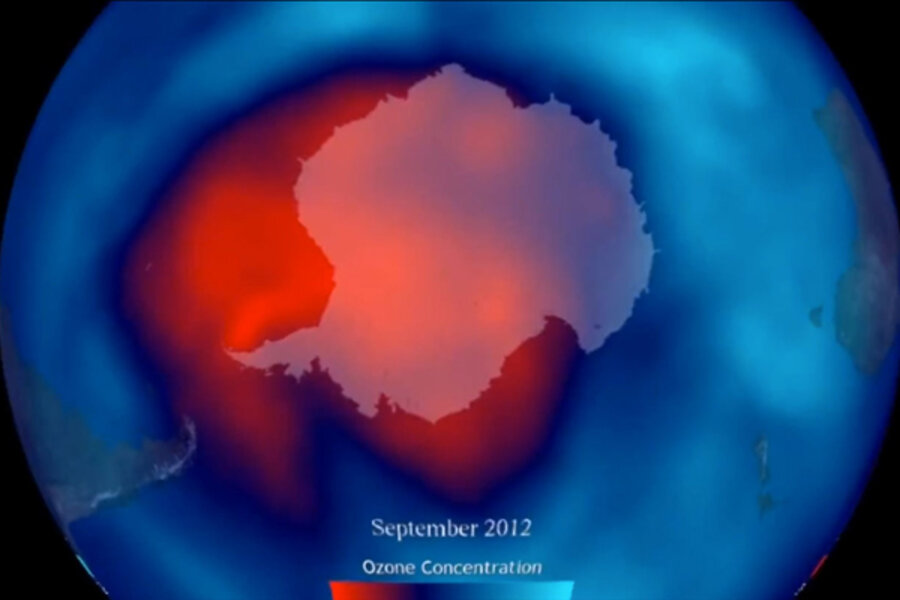Antarctic Ozone Hole 2nd Smallest in 20 Years
Loading...
The ozone hole above the Antarctic has hit its maximum extent for the year. Due to warm temperatures, the opening in the protective atmospheric layer was the second smallest it has been for 20 years, scientists said Wednesday (Oct. 24).
Stretching to 8.2 million square miles (21.2 million square kilometers), an area roughly the size of all of North America,the ozone hole reached its peak on Sept. 22. The largest one recorded to date spanned 11.5 million square miles (29.9 million square km) in 2000.
On the Earth's surface, ozone is a pollutant, but in the stratosphere, it reflects ultraviolet radiation back into space, protecting us from skin cancer-causing UV rays.
Scientists say the hole in this protective ozone layer mainly is caused by chlorine from man-made chemicals called chlorofluorocarbons (CFCs), which were created in the early 20th century and used in products like spray cans. CFCs, which destroy ozone, are believed to linger in the stratosphere for decades.
Air temperature can affect the rate at which these CFCs break apart ozone molecules. Years with large ozone holes are generally associated with very cold winters over Antarctica and high polar winds, the scientists say.
Researchers with the National Oceanic and Atmospheric Administration (NOAA) said the gouge, which forms in September and October, was smaller this year because of warmer air temperatures high above the South Pole.
"It happened to be a bit warmer this year high in the atmosphere above Antarctica, and that meant we didn't see quite as much ozone depletion as we saw last year, when it was colder," said Jim Butler with NOAA's Earth System Research Laboratory in Boulder, Colo.
The Antarctic ozone hole was first discovered in the late 1970s. The gash continued to grow steadily during the 1980s and 90s, though since early 2000 the growth reportedly leveled off. Scientists, however, have seen large variability in its size from year to year.
Although the production of ozone-depleting chemicals has been regulated for the past 25 years, scientists say it could be another decade before we start seeing early signs of Antarctic ozone layer recovery. NASA atmospheric chemist Paul Newman has estimated that the ozone layer above Antarctica likely will not return to its early 1980s state until about 2060.
Follow LiveScience on Twitter @livescience. We're also on Facebook & Google+.





